Best Driving Sunglasses for 2025: Expert Guide
You’re driving home after a long day, and suddenly the sun hits that annoying angle—right in your eyes, bouncing off the windshield like a mirror. You’re wearing your go-to sunglasses, maybe even a pricey pair, but they’re not helping much. You’re squinting, uncomfortable, and just hoping you don’t miss anything on the road.
If that sounds familiar, you’re definitely not alone. A lot of sunglasses look good but just aren’t made for driving. That’s where this guide comes in. We’ll break down what actually matters when picking out driving sunglasses in 2025—whether it’s lens tech, fit, or price—so you can find something that works for you.
By the end, you’ll have a clear idea of what to look for and which pairs are worth it—not just for style, but for safety and comfort behind the wheel.
Contents
Why Driving Sunglasses Matter More Than You Think
Here’s a sobering fact: blinding sun glare doesn’t just make driving uncomfortable—it puts lives at risk. Recent research estimates it causes around 3,000 crashes in the U.S. every year. When you’re cruising at 65 mph, even a brief moment of obscured vision can lead to devastating consequences.
Regular fashion sunglasses simply aren’t designed for the unique challenges of driving. Think about it: when you’re walking around, you can easily adjust your head position or find shade. Behind the wheel, you’re stuck in one position, dealing with multiple light sources bouncing off your windshield, dashboard, and other vehicles.
What Makes Driving Sunglasses Special?
Understanding what separates driving sunglasses from regular eyewear will help you make a smarter purchase decision. Here are the key features that matter most:
Polarization Technology filters out horizontal light waves that create glare. When sunlight bounces off your windshield or wet pavement, it creates horizontal waves that can temporarily blind you. Polarized lenses block these dangerous waves while allowing vertical light through – eliminating the most hazardous glare you’ll face on the road.
Lens Color Science goes beyond personal preference. Gray lenses provide natural color perception, ideal for highway driving where you need to judge distances accurately. Brown and amber tints enhance contrast, helping in low-light or city driving conditions with varying light.
UV Protection Levels in quality driving sunglasses exceed basic drugstore protection. Premium lenses include coatings that block blue light and infrared radiation, reducing eye fatigue and long-term damage.
Fit and Coverage become critical in driving position. Wraparound styles prevent light from sneaking around lens edges, eliminating distracting peripheral glare.
Optical Clarity means lenses must be distortion-free. Even slight imperfections can make it harder to judge distances or read road signs clearly.
Durability Factors matter because driving sunglasses face temperature extremes, dashboard storage, and constant use while maintaining their protective coatings.
Top 10 Best Driving Sunglasses for 2025
Premium Driving Sunglasses ($150+)
1. Ray-Ban RB4165 Justin Polarized Price Range: $180-$250
These aren’t your typical Ray-Bans. The Justin series features advanced polarized lens technology specifically designed for driving. The 54mm lens size provides excellent coverage without being bulky, and the rubber finish keeps them securely in place during long drives.
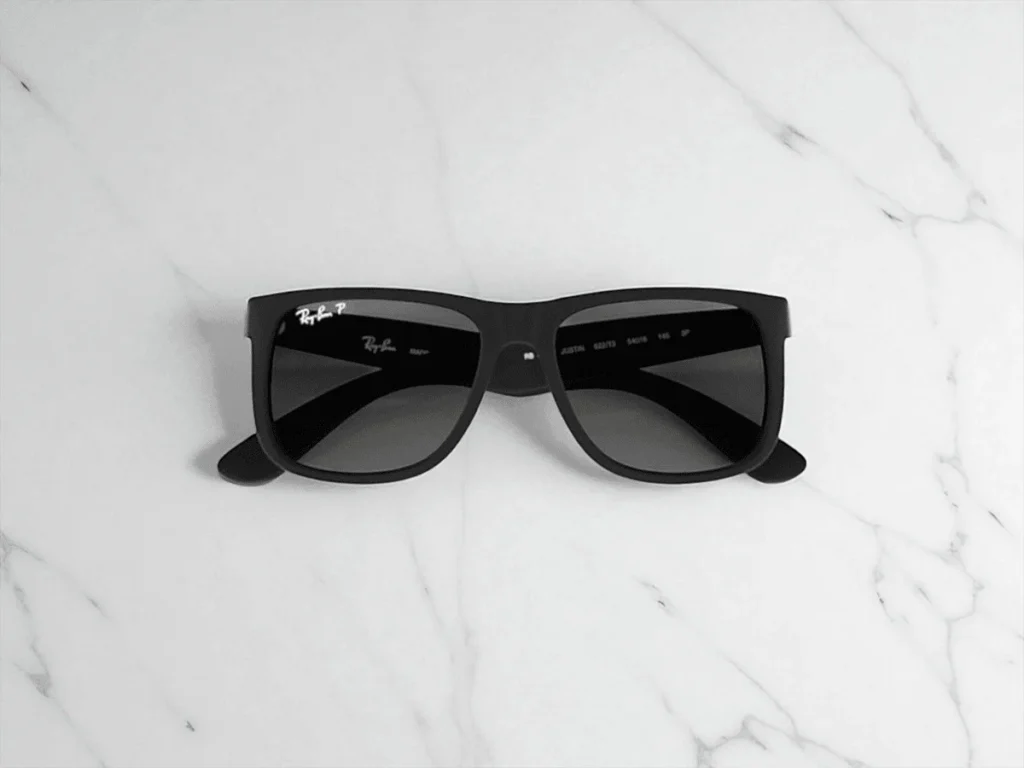
What makes these perfect for driving is the precise polarization that eliminates glare without affecting LCD dashboard displays – a common problem with cheaper polarized glasses. The optical clarity is exceptional, with zero distortion across the entire lens surface.
Pros: Superior glare reduction, comfortable for extended wear, classic style that works everywhere
Cons: Higher price point
Best for: Daily commuters who want premium quality and timeless style
2. Oakley Holbrook Prizm Driving Price Range: $170-$190
Oakley’s Prizm technology takes driving sunglasses to the next level. These lenses are specifically tuned to enhance colors and contrast for driving conditions. The Holbrook frame offers a modern take on classic styling with exceptional durability.
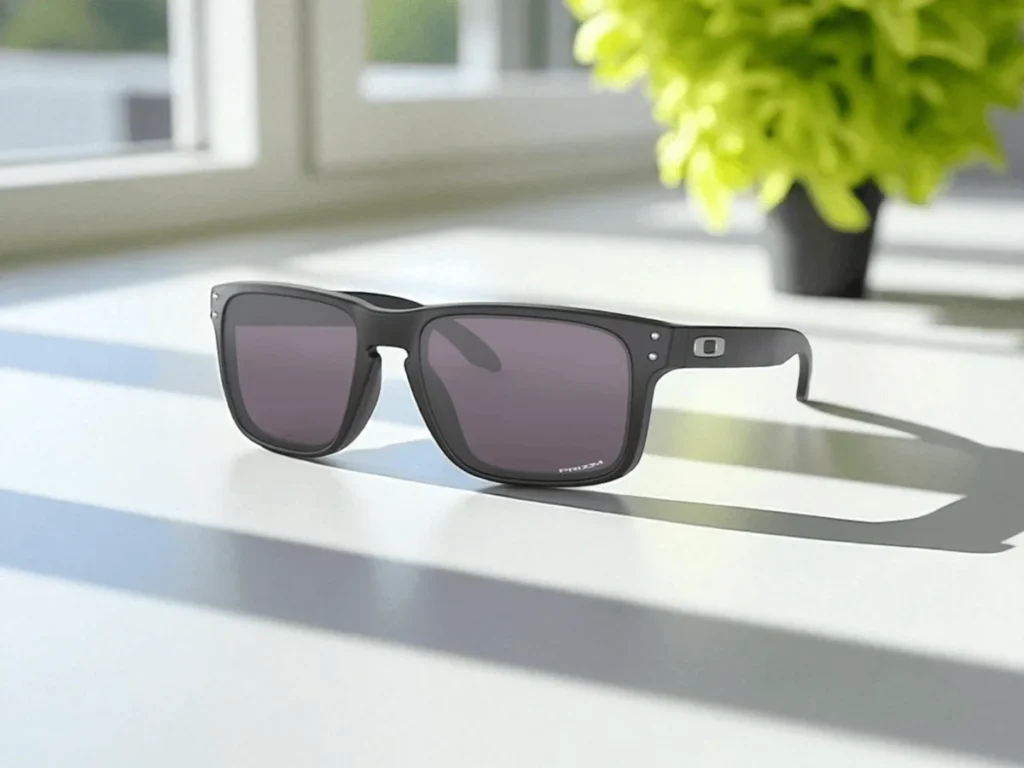
The Prizm Driving lens filters specific wavelengths of light to enhance reds and greens – crucial for quickly identifying brake lights and traffic signals. The frame’s stress-resistant O Matter material can handle the temperature swings in your car without warping.
Pros: Advanced lens technology, lightweight yet durable, excellent color enhancement
Cons: Prizm lenses can be expensive to replace, and specific tints may not suit all preferences
Best for: Drivers who want the latest technology and spend significant time behind the wheel
3. Maui Jim Peahi Polarized Price Range: $270-$320
Maui Jim’s reputation for exceptional lens quality shines in the Peahi model. Their PolarizedPlus2 technology blocks 100% of harmful UV rays while enhancing color and contrast. The wraparound design provides excellent coverage and eliminates peripheral glare.
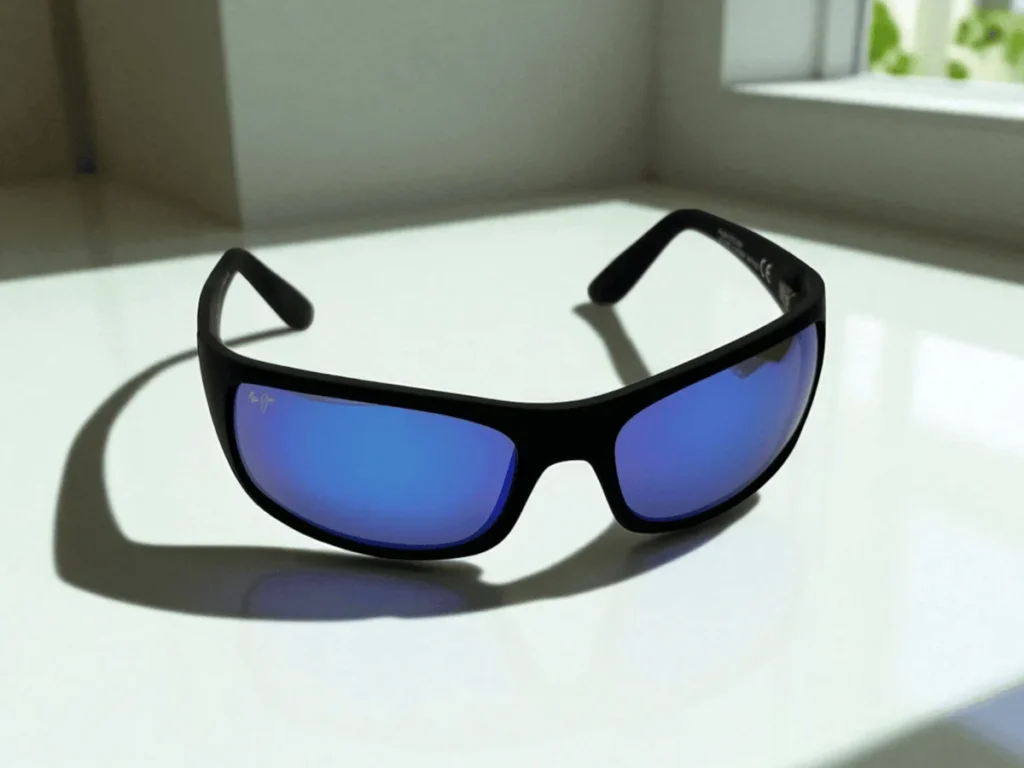
What sets these apart is the lens clarity – Maui Jim uses some of the clearest optical materials available. The neutral gray tint provides accurate color perception, essential for safe driving. The frame’s flexible hinges and rubber nose pads ensure comfort during extended wear.
Pros: Exceptional optical clarity, superior build quality, excellent warranty
Cons: Higher price point, limited frame style options
Best for: Serious drivers who prioritize optical performance above all else
4. Costa Del Mar Blackfin Polarized Price Range: $220-$250
Costa’s 580 lens technology offers excellent polarization with enhanced color contrast. These glasses excel in bright conditions and water reflection scenarios.
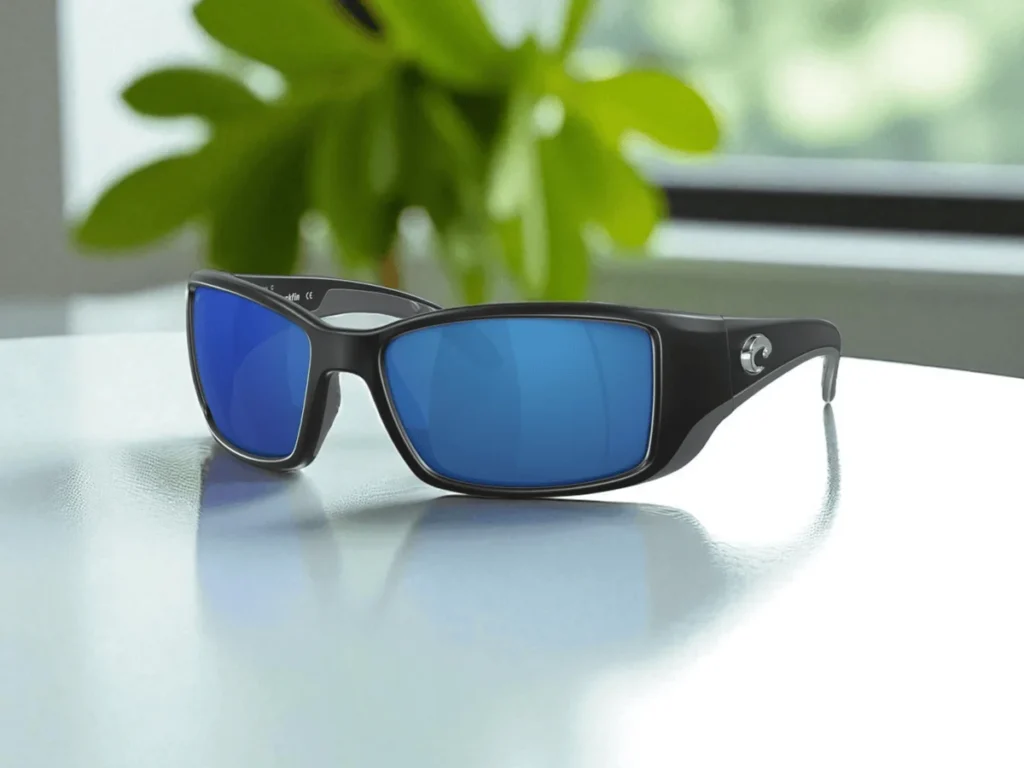
The 580 lens technology filters specific wavelengths that cause eye fatigue and haze, resulting in clearer vision during long drives. The frame material is lightweight yet incredibly durable, perfect for daily use.
Pros: Excellent polarization, comfortable fit, great for bright conditions
Cons: Limited lens color options, frame style may not suit all face shapes
Best for: Drivers in sunny climates who need superior glare protection
5. Serengeti Aviator Photochromic Price Range: $220-$250
Serengeti’s photochromic technology automatically adjusts lens darkness based on light conditions – perfect for drives that span different lighting environments. The Aviator frame combines Italian craftsmanship with practical driving features.
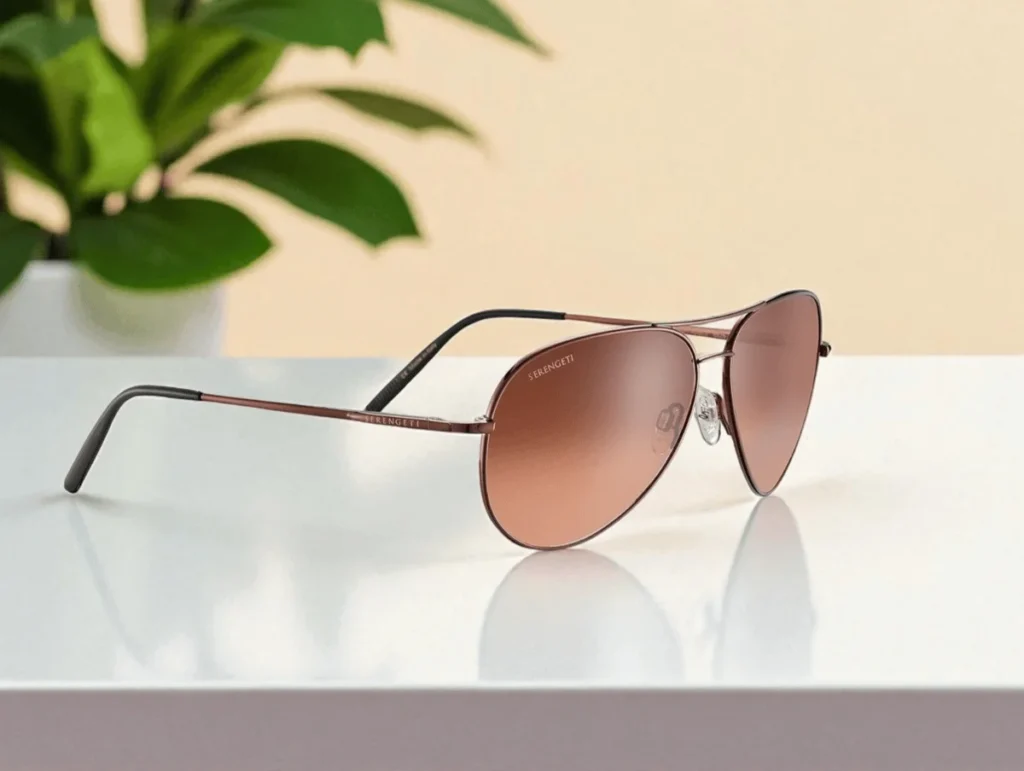
The photochromic lenses transition from light amber indoors to dark brown in bright sunlight, eliminating the need to carry multiple pairs. The mineral glass lenses provide superior optical clarity and scratch resistance compared to polycarbonate alternatives.
Pros: Automatic light adjustment, exceptional lens quality, scratch-resistant
Cons: Transition time can be slow, higher weight due to glass lenses
Best for: Drivers who frequently travel between different lighting conditions
Mid-Range Driving Sunglasses (Under $150)
6. Wiley X WX Saint Polarized Price Range: $95-$120
These tactical-style glasses offer military-grade protection with comfort. The Saint model features ANSI-rated impact resistance and excellent polarization. The wraparound design provides comprehensive coverage and eliminates glare from all angles. The polarized lenses effectively eliminate glare while maintaining true color perception, crucial for safe driving decisions.
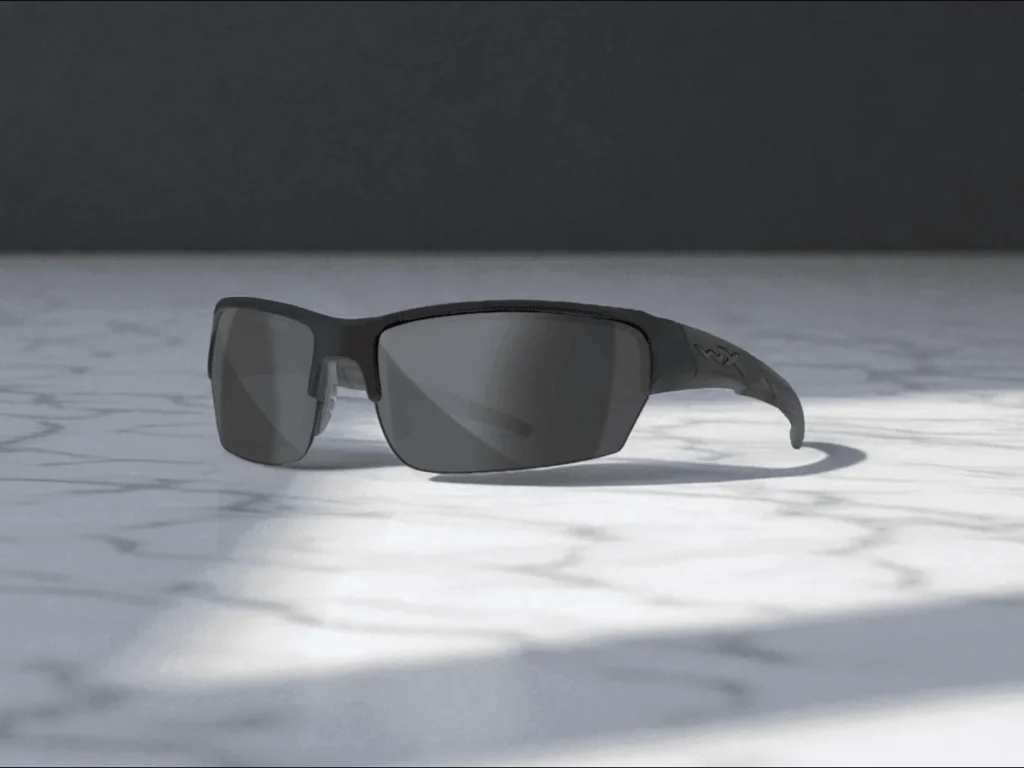
Pros: Military-grade durability, excellent glare protection, versatile design
Cons: Tactical styling may not appeal to everyone, and can feel bulky initially
Best for: Drivers who prioritize durability and maximum protection
Budget-Friendly Driving Sunglasses (Under $50)
7. Duduma Polarized Sports Sunglasses Price Range: $20-$35
Don’t let the low price fool you – these offer genuine polarization and UV protection at an unbeatable value. The wraparound design provides good coverage, and the TR90 frame material is both lightweight and flexible.
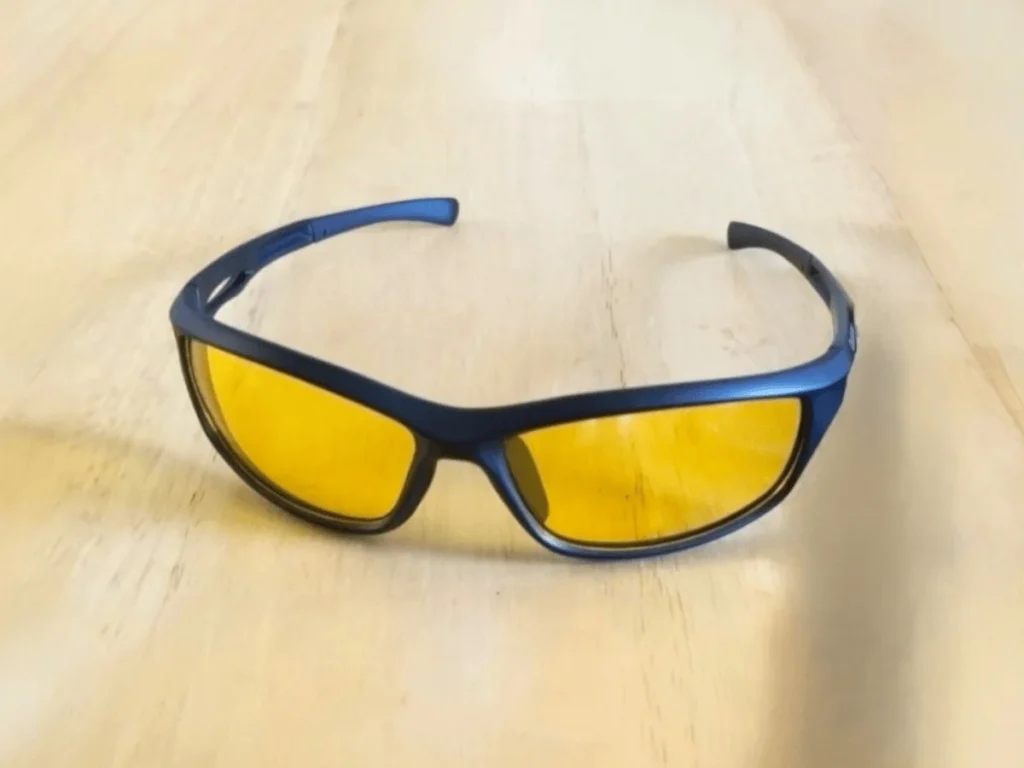
While they lack the optical precision of premium brands, they effectively reduce glare and provide adequate protection for casual driving.
Pros: Excellent value, genuine polarization, comfortable fit
Cons: Lower optical quality, limited durability, basic lens coatings
Best for: Budget-conscious drivers who need basic glare protection
8. SUNGAIT Vintage Round Polarized Price Range: $15-$30
These vintage-inspired glasses combine classic styling with modern polarization technology. The TR90 frame construction feels substantial while remaining lightweight. The polarized lenses effectively reduce glare without color distortion. While not as optically perfect as premium options, they offer solid performance for the price point.
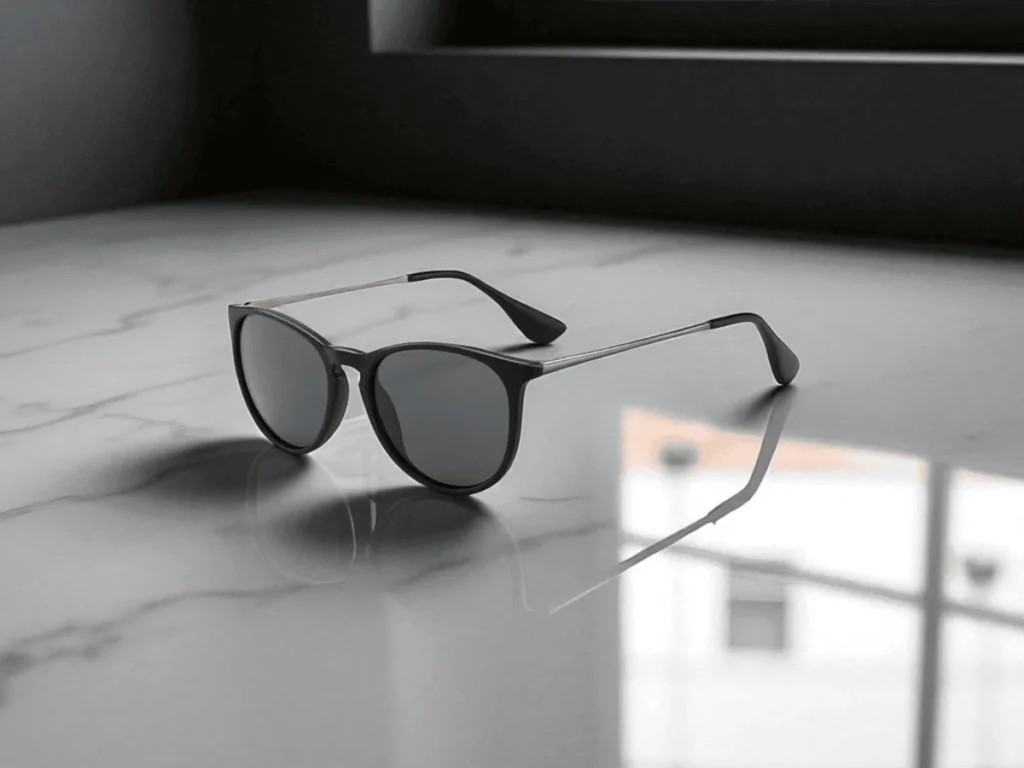
Pros: Classic styling, comfortable fit, effective polarization
Cons: Limited impact resistance, basic lens coatings
Best for: Style-conscious drivers on a budget
9. Torege Polarized Sports Sunglasses Price Range: $25-$40
Torege offers sports design with practical driving features. The polarized lenses provide good glare reduction, and the TR90 frame material offers flexibility and durability. The wraparound design ensures comprehensive coverage. While not premium quality, they offer solid performance for driving.
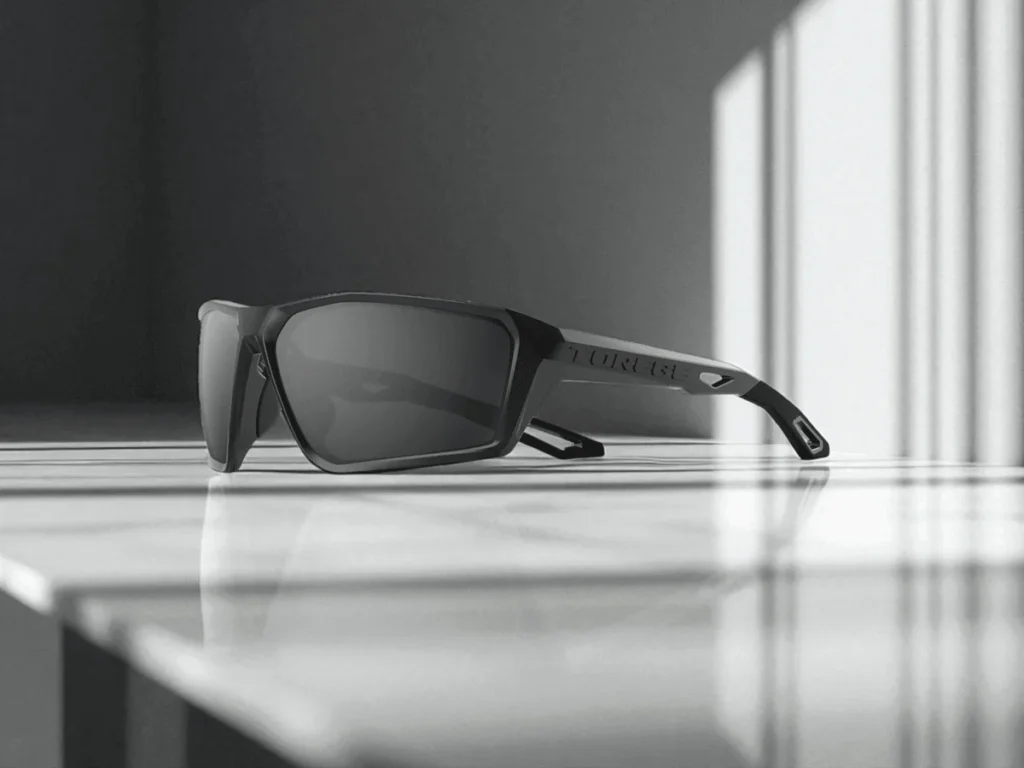
Pros: Good build quality for the price, effective glare reduction, comfortable fit
Cons: Limited optical precision, basic warranty
Best for: Weekend drivers who want polarized protection without premium pricing
10. ROCKNIGHT Driving Polarized Sunglasses Price: $24.99
Specifically marketed for driving, these glasses feature polarized lenses designed to enhance contrast and reduce eye strain. The lightweight metal frame provides durability without bulk. The adjustable nose pads and carved temple grips ensure a secure fit during extended wear.
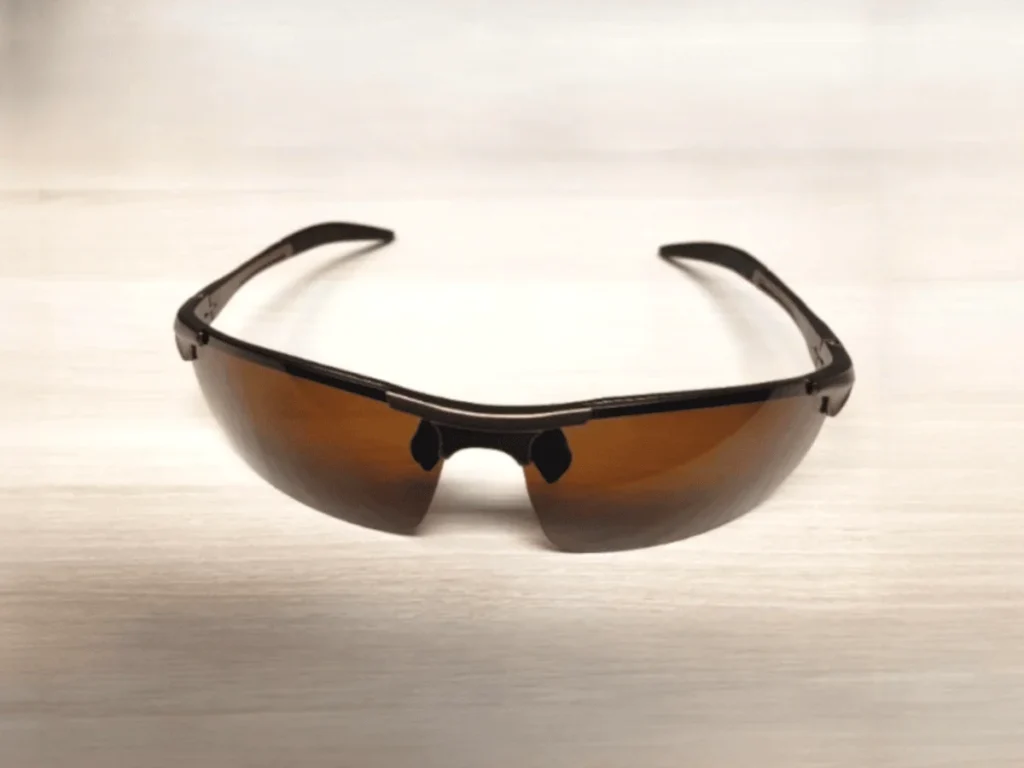
Pros: Driving-specific lens tint, lightweight construction, adjustable fit
Cons: basic lens quality
Best for: Drivers who primarily need glasses for dawn/dusk commuting
Specialized Driving Conditions Guide
Different driving situations call for specific eyewear considerations. Understanding these nuances will help you choose the right sunglasses for your primary driving conditions.
Highway Driving demands maximum glare protection and optical clarity. High-speed driving means you need to spot hazards quickly and judge distances accurately. Gray or neutral-tinted lenses work best here because they don’t alter color perception. Wraparound styles prevent peripheral glare that can be particularly dangerous at highway speeds.
City Driving involves constantly changing light conditions – from bright intersections to shadowed streets. Photochromic lenses that adjust automatically work well here, as do amber tints that enhance contrast in varying light. The frequent stop-and-go nature of city driving makes comfort features like adjustable nose pads and lightweight frames more important.
Night Driving presents unique challenges. While you shouldn’t wear dark sunglasses at night, yellow-tinted glasses can help reduce glare from oncoming headlights and street lamps. These specialized night driving glasses filter blue light that causes the most eye strain and glare.
Weather-Specific Considerations matter more than most drivers realize. Rain creates additional glare from wet surfaces, making polarization crucial. Snow driving requires glasses that can handle extreme temperature changes without fogging. Fog conditions benefit from amber or yellow tints that enhance contrast in low-visibility situations.
Prescription Wearers have several options beyond traditional prescription sunglasses. Clip-on polarized lenses offer versatility and cost savings. Prescription inserts for wraparound frames provide the best of both worlds – premium protection with corrected vision.
How to Choose the Right Driving Sunglasses for You
Selecting the perfect driving sunglasses depends on several personal factors that go beyond just trying on different styles.
Face Shape and Fit start with understanding your face geometry. Round faces benefit from angular frames that add definition. Square faces look better with curved frames that soften strong jawlines. The key is ensuring the glasses sit properly on your nose and don’t slide down during driving.
Prescription Needs require careful consideration. If you wear glasses, you’ll need prescription sunglasses, clip-ons, or contacts with regular sunglasses. Prescription sunglasses offer the best optical quality but cost more and limit your flexibility.
Budget Constraints don’t have to mean compromising safety. While premium glasses offer superior optical quality and durability, many mid-range options provide excellent protection and performance. Focus on genuine polarization and UV protection rather than brand names.
Primary Driving Conditions should guide your lens choice. If you primarily drive highways in bright conditions, invest in premium gray-tinted polarized lenses. City drivers might prefer photochromic lenses that adapt to changing conditions.
Style Preferences vs. Functionality often conflict, but the best driving sunglasses successfully balance both. Modern designs prove you don’t have to sacrifice style for safety – many premium options look as good as they perform.
Common Mistakes to Avoid
Learning from others’ mistakes can save you money and frustration when choosing driving sunglasses.
Buying Based on Looks Alone is the most common error. Those Instagram-worthy sunglasses might look great but could actually make driving more dangerous if they distort your vision or provide inadequate protection.
Ignoring Polarization Benefits happens when people focus only on UV protection. While UV protection prevents long-term eye damage, polarization prevents immediate driving hazards by eliminating glare.
Wrong Lens Colors for your driving environment can reduce safety. Blue lenses might look cool but can make it harder to distinguish between brake lights and turn signals. Choose lens colors based on your primary driving conditions, not personal preference.
Poor Fit Leading to Distractions occurs when glasses slide down your nose or pinch behind your ears. Uncomfortable glasses become a distraction that takes your attention away from driving.
Forgetting About Prescription Needs until after purchasing regular sunglasses creates an expensive problem. Plan for prescription requirements from the start, whether through prescription lenses or clip-on solutions.
Not Considering Durability for car storage means your glasses might not survive summer heat or winter cold. Choose frames and lenses that can handle temperature extremes without warping or coating damage.
Frequently Asked Questions
Are expensive driving sunglasses worth it?
The answer depends on how much you drive and how much you value optimal vision. Premium sunglasses offer superior optical clarity, durability, and comfort. If you drive daily or for long distances, the investment pays off in safety and comfort. However, mid-range options can provide excellent protection for casual drivers.
Can I use regular sunglasses for driving?
Regular sunglasses can work for driving, but they’re not optimized for the specific challenges you face behind the wheel. They may lack proper polarization, have inferior optical quality, or use lens tints that affect color perception. For safety, driving-specific eyewear is recommended.
What’s the best lens color for driving?
Gray lenses provide the most natural color perception and work well for most driving conditions. Brown and amber tints enhance contrast and work better in low-light conditions. Avoid blue, pink, or other fashion tints that can distort important colors like brake lights and traffic signals.
How often should I replace my driving sunglasses?
Replace driving sunglasses when they show signs of wear that affect vision or fit. Scratched lenses, loose hinges, or warped frames compromise safety. With proper care, quality sunglasses should last 2-3 years of daily use.
Are wraparound styles really better in driving sunglasses?
Wraparound styles provide better coverage and eliminate peripheral glare, making them excellent for driving. However, they may not suit all face shapes or personal preferences. The key is finding glasses that provide adequate coverage while fitting comfortably.